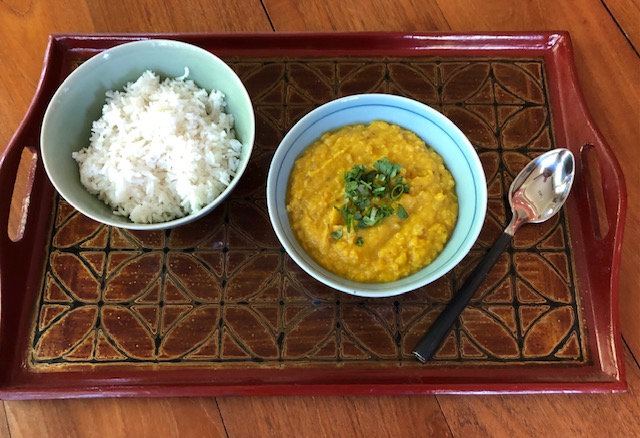Ranch: America’s Favorite Salad Dressing
For the past thirty years
Ranch Dressing has been the best-selling salad dressing in US grocery stores. A
survey of food preferences in 2017 showed Ranch to be the favorite dressing of
about 40 percent of Americans, way above any other dressing. I’ve wondered if
its popularity initially developed because the dressing clung to and
considerably enhanced the otherwise dull iceberg lettuce that was then the
prevalent salad green.
This morning at our local
supermarket I counted 19 different types of bottled Ranch dressing, many with
added flavors like “Siracha,” chipotle, or dill. But that was just on the
store’s dry-goods shelves. Nine other varieties filled the produce department’s
refrigerated shelves near the salad greens. “Ranch” or “Cool Ranch” flavor has
also been added to all kinds of snack foods, including potato chips, corn
chips, popcorn, and even taco shells. There are several varieties of dry mix,
mostly from Hidden Valley Food Products Company, to make ranch dressing at home
or in the restaurant kitchen. For the food industry, Ranch Dressing has clearly
been a phenomenon.
The classical Ranch dressing
is the familiar creamy white liquid with tiny green herbal specks, a pleasantly
mild acidity, and overtones of garlic, onion, mustard, dill and parsley. The
typical (and original) formulation is about half mayonnaise and half
buttermilk, with some added seasonings. There are now also vegan versions
without dairy and with no egg in the mayonnaise.
It all began in 1949, when an
obviously creative fellow, Steve Henson, from Nebraska, moved with his wife to
Alaska. There he became a very successful plumbing contractor, making a huge
amount of money building houses in the Alaskan bush. While out at the job
sites, Henson created a salad dressing that he served with the meals he
provided to his workers.
After only three years in
Alaska, at age 35 and feeling wealthy, Henson and his wife “retired” to Santa
Barbara County, CA. There in 1956, they bought a ranch in San Marcos Pass, and
renamed it Hidden Valley Ranch. They turned the place into a sort of dude ranch
for guests. In developing the dining menu Henson brought back his salad
dressing from Alaska days. The guests liked it, both on salads and on steak,
and many wanted to buy it to take back home. As demand built for his dressing
Henson began offering packaged mixes so people could make their own. By 1957,
the mix was being sold locally in stores. Although the guest ranch closed in
the mid ‘60s, Henson’s mail order business for his “ranch dressing” prospered.
The Hensons established Hidden Valley Food Products, Inc. and enlarged the
production facilities. The business continued to flourish, and in 1972 it was bought out by Clorox, of which Hidden Valley
Foods Company remains a subsidiary, though quite unrelated to the parent
company’s main products. Several reformulations of the product followed,
including a shelf-stable bottled dressing that was introduced in the early
1980s.
Numerous other food companies,
meanwhile, had introduced “ranch style” dressing mixes, and subsequently
bottled dressings to compete. Lawsuits and copyright challenges followed for a
while. But finally, ranch dressing in all its variations remains super
plentiful in the market, as I witnessed this morning. Hidden Valley, who calls
its products “The Original Ranch,” remains among the contenders, but with a
minority of the ranch dressings offered.
In addition to bottled
dressing, Hidden Valley’s powdered
dressing mix remains available. And by the way, monosodium glutamate is its
first-listed ingredient.
That’s a long introduction
but, hey, that’s the commercial food biz. How about making Ranch Dressing at
home from scratch? In my view, homemade salad dressings are always better, to
say nothing about fresher and less expensive, than commercial ones.
.
In this recipe I substitute
readily available yogurt and a little sour cream for the original buttermilk.
That old-fashioned product is rarely in home refrigerators now, and it’s
generally only sold by the quart, which would be wasteful. Another
accommodation, I substitute a green onion for the dried chives and onion that
would have been used originally. For the dill, fresh is nice, but dried dill
weed is easier to keep on hand, and would have been in the dry mixes that built
Ranch dressing’s popularity. And rather than dry mustard powder, which few have
on hand these days, I use Dijon or brown mustard. Finally, I don’t use MSG.
That flavor enhancer, apparently, is typical in most bottled and dry versions
of Ranch dressing.
The recipe makes somewhat
over a pint. Store in a screw-capped jar in the refrigerator, and shake the jar
before using the dressing.
1 cup yogurt, low-fat
3/4 cup mayonnaise
1/4 cup sour cream
1/4 cup water
1 teaspoon Dijon or brown
(not yellow) mustard
1 thin green onion, white and
green parts, roots removed
2 sprigs flat parsley, rinsed
1 small clove garlic
1 1/2 teaspoons salt
1 teaspoon sugar
1/2 teaspoon dry dill weed
1/2 teaspoon ground black
pepper
In a large bowl, place the
yogurt, mayonnaise, sour cream, water, and mustard.
On a cutting board, using a
chef’s knife, finely mince the green onion and parsley. Put the garlic through
a garlic press, or very finely mince it in with the green onion and parsley.
Add these to the bowl. Add the salt, sugar, dry dill, and black pepper. Mix the
dressing thoroughly with a whisk or fork. Hold for at least ten minutes before
using, and mix it again.
The dressing can be stored in
the refrigerator in a screw-capped jar for up to a week or two.
Use as a salad dressing, a
dip for french fries, potato chips, or artichoke hearts. Or (as was done at the
original Hidden Valley Ranch) drizzle it on grilled steaks or burgers.

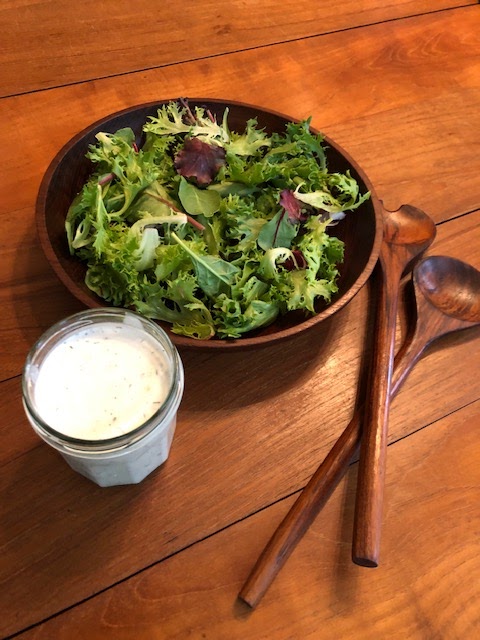


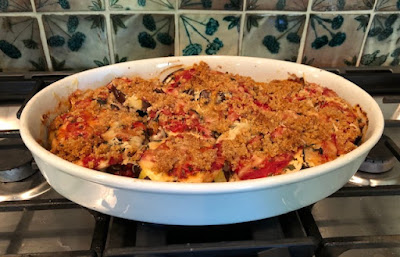
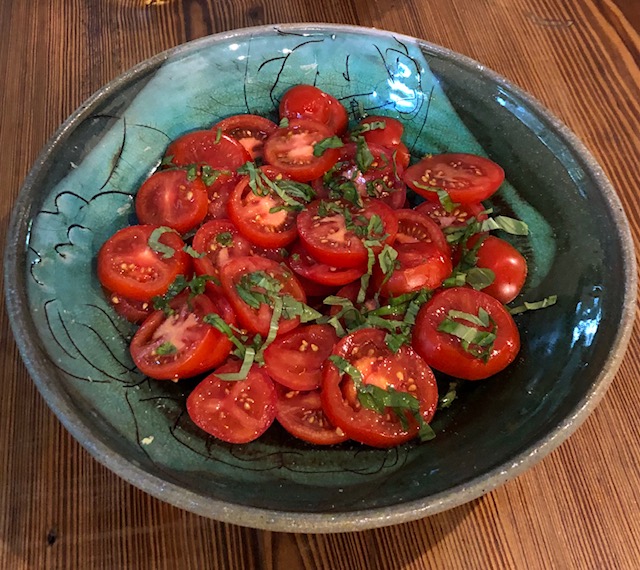







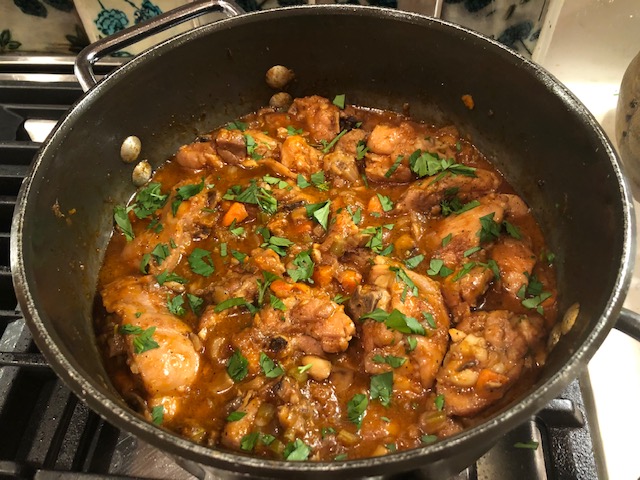

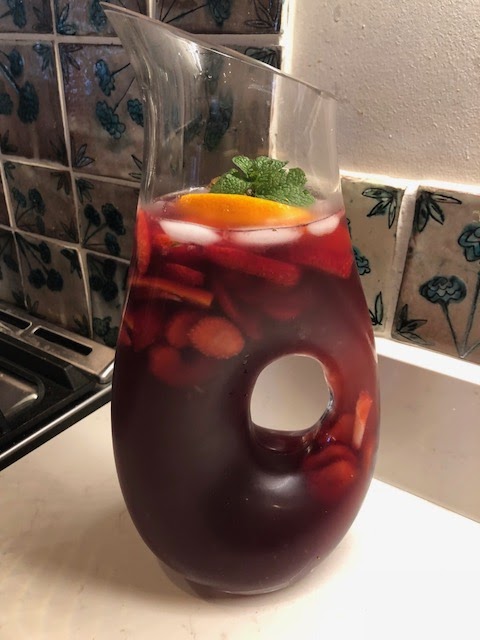



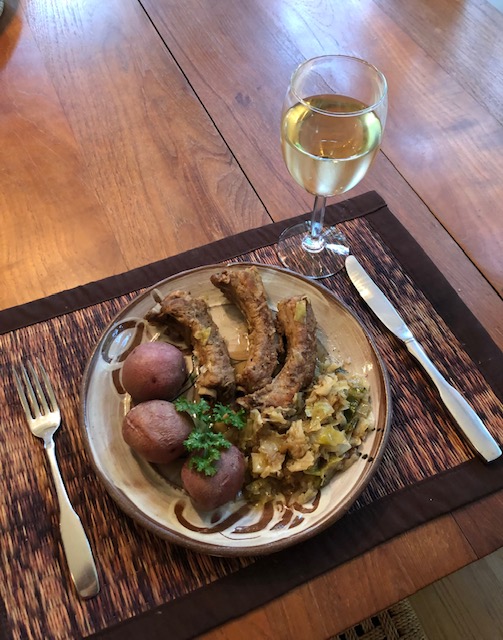

.jpg)
.jpg)
